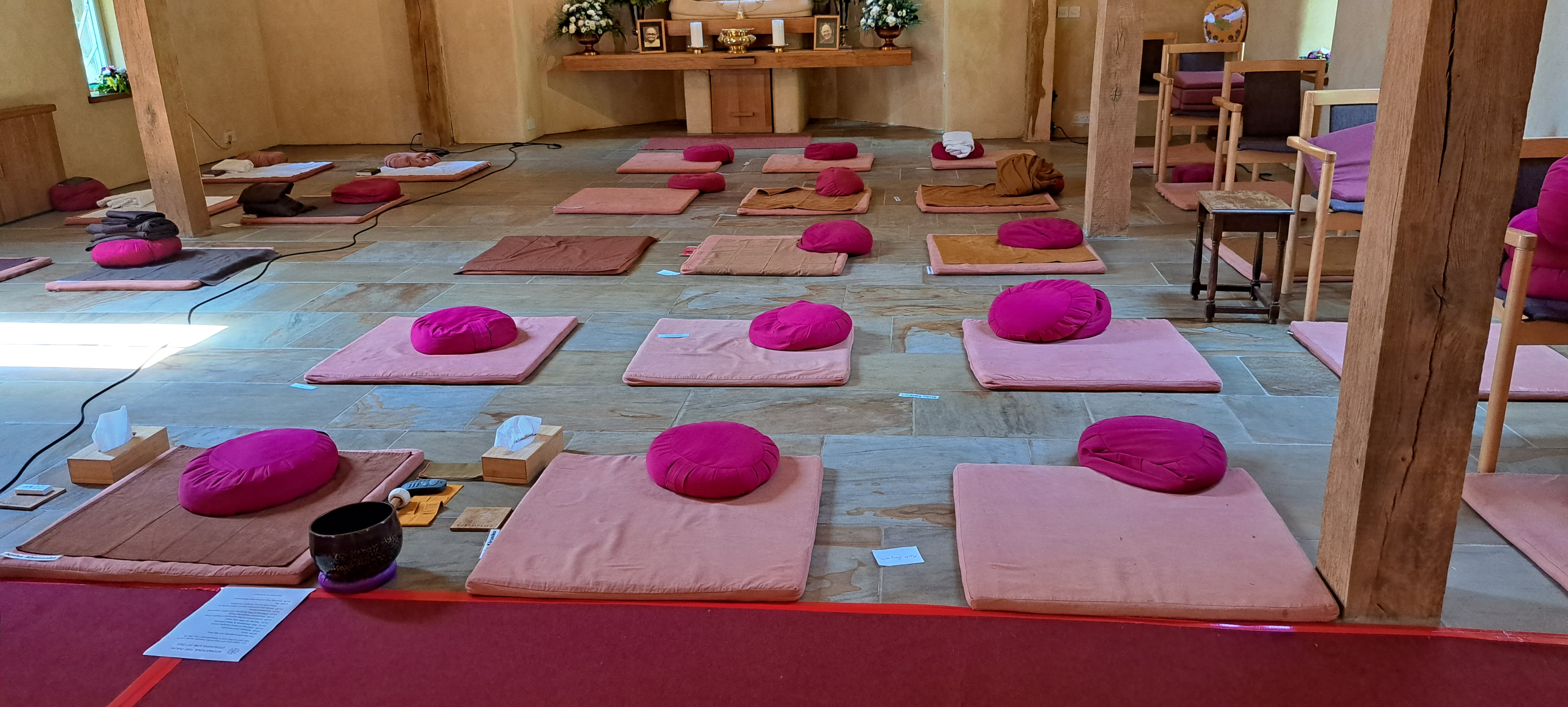What is Buddhism?
Buddhism is a way of life and a way of thinking, based on the teaching of the Buddha (the Enlightened One), known as the Dhamma or Dharma. It is the way that leads from the suffering and stress that we experience in life, to the freedom and peace of mind known as Nirvana.
The Buddha taught for many years following his enlightenment some 2,500 years ago. A huge amount of his teaching has been preserved in the Pali language, and is still taught by the monastic tradition he established, the Sangha. Many different traditions have evolved in different countries, but all authentic Buddhist traditions are founded on the original teachings. Nowadays the term Sangha is often used more broadly, to mean Buddhist monastics or clergy of all traditions, or even the whole Buddhist community.
The Buddha’s enlightenment arose from his experience of what we might call the spiritual dimension, and how this transcends the many forms of unhappiness we experience in life. But in contrast with most religions, his teaching is based firmly on what we experience ourselves, in the natural world. While he made many references to people’s ideas of spiritual beings and heavenly realms, his teaching is not about these things. Nirvana is not Heaven, in the Buddha’s teaching this can be experienced in our own lives.
The central teaching concerns the nature of happiness and unhappiness, known as the Four Noble Truths: The Nature of Suffering, The Cause of Suffering, The End of Suffering, and The Way to End Suffering.
The Nature of Suffering
in the Buddha’s teaching is that life is impermanent, bound up with suffering, and subject to change. This is known as the Three Signs of Being: Impermanence, Suffering (unhappiness or dissatisfaction), and Non-self. These three characteristics of existence in the world are inter-connected within our experience of suffering.
Non-self is a key aspect of the Buddha’s insight: the understanding that life is a process of change; that everything we think of as our “self” is impermanent, bound up with suffering, and subject to change; the idea of a permanent, independent self is an illusion; and everything else in the world is subject to the three signs of being. In the Buddha’s teaching, the only thing that does not change and does not pass away is the state of freedom and peace of mind called Nirvana.
From birth to death we change from moment to moment, according to the causes and conditions that have affected us up to then: in Buddhist teaching it is called Conditioned Existence. At any one moment, we are exactly what we have to be, resulting from everything that has happened up to that moment. Then, whatever happens at that moment, and how we react to it conditions what we become in the next moment. The Buddhist path focuses on this crucial point, and on developing mindfulness or “present moment awareness.” This helps us to respond in the actual moment with wholesome thought and action, which leads to happiness, and refrain from unwholesome thought and action which leads to suffering.
The Cause of Suffering
is selfish craving: grasping at what we like, repelling what we dislike, and attaching to ideas about our self or identity. The Buddha called these three aspects of self-centredness Greed, Hatred and Delusion, the Three Evil Roots, or the Three Fires.
The End of Suffering
is the destruction of selfish craving. With the extinction of the Three Fires, the freedom and peacefulness of Nirvana is experienced.
The Buddhist path leads us gradually towards Nirvana, and turns our attention outwards from ourselves so that we live more in what the Buddha called the Heavenly Dwellings: Loving Kindness, Compassion, Sympathetic Joy, and Equanimity. The first three qualities are the free and natural sharing in life as it happens around us, in other living beings and in the whole natural world. This open-heartedness is balanced by the further essential quality of equanimity (evenness or serenity), which is a particular emphasis of Buddhist practice.
The Way to the End of Suffering
is the Buddha’s Noble Eightfold Path, a system of training in higher conduct, heart and mind, and wisdom. Higher conduct includes right speech, right action, and right livelihood, which support the training of heart and mind. Training the heart and mind includes right effort, right mindfulness and right concentration. It is the focus of meditation practice, and supports the development of wisdom. Wisdom combines right understanding and right intention, and motivates all the steps of the path. All eight steps are to be taken together, the Buddhist way of life and thinking.
More about Buddhism
Please click on the links for more about the Buddha’s teaching.
